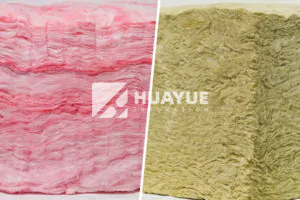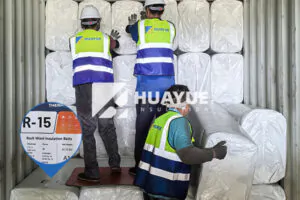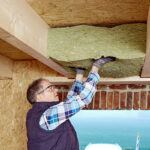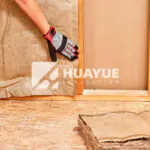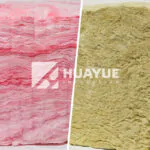Rock Wool External Insulation: Is It the Best Choice for Modern Buildings?
Many people worry about choosing the wrong insulation and facing costly repairs later. Rock wool external insulation might be the answer to better safety and long-term cost savings.
Rock wool can be used for external insulation because it resists fire, moisture, and temperature changes. It insulates well and helps reduce energy costs for exterior walls.

Rock wool stands out because it fits many external insulation needs, but not every application is the same. Factors like building type, climate, and installation quality matter. Let’s look at how rock wool performs in different scenarios and examine some common concerns before making a decision.
Can ROCK WOOL be used externally?
Many people wonder if rock wool works for outside walls. They worry about weather damage and want reliable results.
Rock wool is designed for external use, as it holds up against rain, wind, and temperature changes without breaking down or losing insulation value.

Rock wool can handle outside conditions because of its structure. The fibers are made from melted rock spun into wool. This makes the material tough against compression and moisture. Rock wool does not rot and does not attract fungi.
For exterior insulation, rock wool panels are fixed onto walls with adhesive and mechanical fasteners. After that, they get an extra protective layer, such as plaster or cladding. This keeps the panels safe and blocks rain and wind from reaching inside.
Some architects and engineers pick rock wool because it meets strict fire codes and produces no toxic smoke. Rock wool does not hold onto water. That means buildings stay safe from mold. Here’s a summary table showing why rock wool is reliable for outside use:
| Feature | Performance |
|---|---|
| Fire Resistance | Non-combustible (up to 1000°C) |
| Moisture Resistance | Hydrophobic, does not rot |
| Insulation Value | High thermal protection |
| Mechanical Strength | Good compressive strength |
| Longevity | Lasts decades if installed well |
| Maintenance | Very low |
When installed the right way, rock wool can give lasting results for outside insulation projects. It will keep buildings warm, safe, and well-protected from the elements.
Is ROCK WOOL insulation good for exterior walls?
Builders often think about how well rock wool insulates exterior walls. They want strong protection from the weather and steady indoor temperatures.
Rock wool insulation gives exterior walls high R-values, strong fire safety, and good noise reduction. This helps create energy-efficient, safer, and quieter buildings.

Rock wool has a high R-value. “R-value” means the material’s resistance to heat flow. In cold places, rock wool keeps heat inside. In hot places, it keeps heat out. This makes it good for year-round energy savings.
Rock wool is also tough against fire. Unlike foam insulation, rock wool doesn’t burn. This gives buildings extra safety and often lets projects pass strict code checks.
Many people also pick rock wool for soundproofing. The dense fibers trap sound waves, keeping outside noise out and inside noise in. This is useful for houses near busy roads or factories.
Here’s a table showing how rock wool compares with other common exterior wall insulations:
| Insulation Type | R-Value (per inch) | Fire Safety | Moisture Resistance | Soundproofing |
|---|---|---|---|---|
| Rock Wool | 3.0 – 4.2 | Best | Good | Good |
| Glass Wool | 2.2 – 2.9 | Good | Moderate | Moderate |
| XPS Foam | 4.5 – 5.0 | Poor | Good | Poor |
| EPS Foam | 3.6 – 4.0 | Poor | Good | Poor |
Rock wool provides balanced insulation that suits many building needs. It’s a top pick for people looking for safety, energy savings, and comfort all in one.
What are the disadvantages of ROCK WOOL?
People like rock wool’s strengths but worry about problems like cost, installation, or long-term issues. They want to know the downsides before buying.
Rock wool’s main disadvantages are higher cost, possible irritation during installation, and the need for good moisture control to avoid small performance drops.
Every material has some drawbacks. Rock wool tends to cost more than other insulation choices. The main reason is the manufacturing process and higher quality standards. Rock wool installation can also be rough on skin and lungs, because the fibers are sharp or dusty. Most people wear gloves, masks, and long sleeves for safety.
Another issue is moisture management. Rock wool itself does not absorb water, but poor installation can let water pass behind the panels. If that happens, nearby surfaces or metal fasteners might develop corrosion. That’s why it’s important to use the right vapor barriers and sealants when putting up rock wool. This keeps the whole system dry.
Here is a detailed comparison:
| Challenge | Details | Solutions |
|---|---|---|
| Higher Initial Cost | More expensive than glass wool or foam | Long-term savings |
| Installation Irritation | Can cause itching or coughing | Protective clothing |
| Water Management | Needs good sealing and barriers | Quality installation |
| Weight | Heavier than foam insulations | Requires strong support |
Even with these issues, buildings often save money over time because of rock wool’s durability and energy efficiency. Careful planning and skilled installers make a big difference.
Does Rock wool lose R-value when wet?
People worry about insulation losing effectiveness from water leaks or humidity. They want to know if rock wool stays strong when exposed to water.
Rock wool keeps most of its R-value even when exposed to moisture. It dries fast and does not break down or support mold growth.
Rock wool is engineered to shed water. The fibers do not hold liquid, so rain or leaks run off quickly. If rock wool does get wet, most of the water drains or evaporates. Once dry, the R-value recovers almost fully. That means buildings with rock wool rarely need costly repairs after rain or plumbing leaks.
Some insulation types lose R-value fast when wet. Foam insulation can warp, and glass wool can collapse. Rock wool stays stable and keeps heat out or in. Even so, if water gets behind the insulation—not into it—building surfaces or structure can be at risk. Quality seals and proper installation block this.
Key facts in a table:
| Problem | Rock Wool Performance | Other Types |
|---|---|---|
| Moisture Absorption | Very low, dries easily | Glass wool: Moderate |
| R-value Retention | Keeps most value when dry | Foam: May reduce |
| Mold/Fungi Growth | Does not support | Foam: Possible |
| Longevity After Wetting | No breakdown | Glass wool: May rot |
Rock wool stands out for staying reliable and safe—even after unexpected water exposure. This makes it a strong choice for outdoor building insulation.
Will rodents nest in Rock wool?
People think about pest problems. They want insulation that keeps out rodents and other animals.
Rodents avoid nesting in rock wool because it is dense, not edible, and does not give warmth or comfort like softer insulations.
Rock wool is a poor place for rodents. The fibers are hard and sharp. Mice and rats usually look elsewhere for shelter. Unlike soft glass wool or open-cell foams, rock wool does not help animals build nests or store food. Engineers often say rock wool panels stay clear of tunnels or chewed holes.
Sometimes, construction sites see rodent activity around insulation. Most problems happen with softer materials. Proper installation—tight fitting, strong barriers, and sealed joints—blocks entry even more. Some professionals use extra barriers in areas with lots of mice or insects, but rock wool by itself is not attractive.
Here is a comparison table:
| Material | Rodent Resistance | Typical Problems |
|---|---|---|
| Rock Wool | Very high | Hard for rodents |
| Glass Wool | Moderate | Easy to nest |
| Spray Foam | Good | Can be chewed |
| Cellulose | Low | Very attractive |
Rock wool offers reliable pest control as part of a safe, long-lasting insulation system.
Conclusion
Rock wool external insulation provides lasting safety, strong thermal protection, and high resistance to weather and pests. For many buildings, it offers solid value and peace of mind.
You may also be interested in:
Ready to Get Started?
Get in touch with our experts for personalized solutions tailored to your needs.
Get Free QuoteLatest Articles
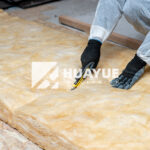
How to Cut Fiberglass Insulation Easily and Safely?
Nov 21, 2025
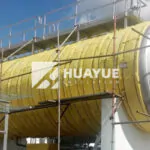
Does fiberglass insulation burn?
Nov 19, 2025
Let's Work Together
Ready to take your business to the next level? Get in touch with our team of experts and let's discuss how we can help you achieve your goals.
Get Free Solutions

